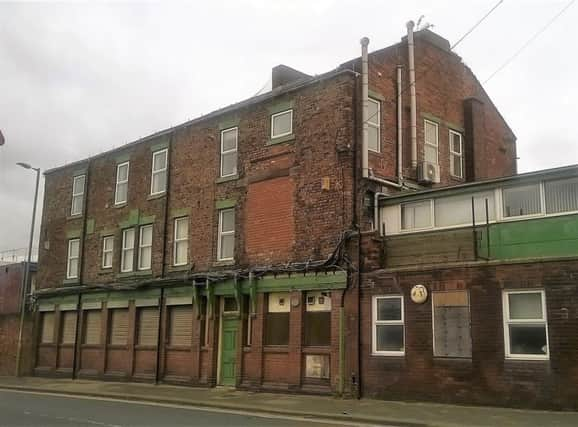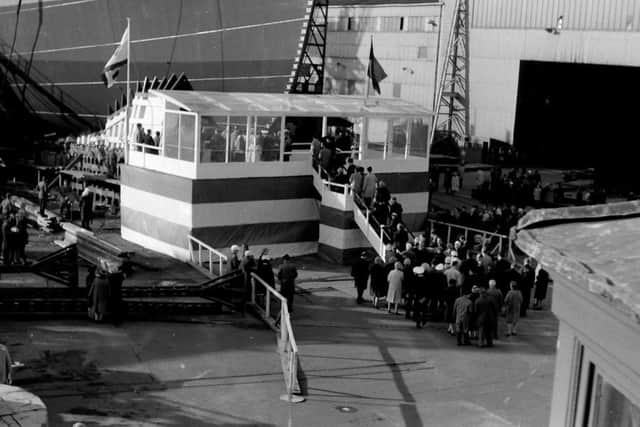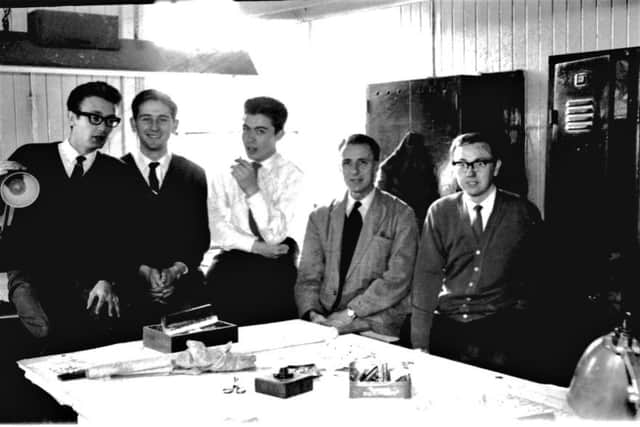Life and times at Readhead's shipyard


“Bill was at Readhead’s from mid 1942 to February 1951,” explains John, who started in the shipyard Drawing Office in August 1964.
“He still remembers the management staff who were there during the Second World War. The Managing Director was GHR Towers, Engineering Director was Mr Coatsworth, Company Secretary was Mr Beck, Shipyard Manager was Douglas Grier and Chief Draughtsman was W.P. Heckels.”


Advertisement
Hide AdAdvertisement
Hide AdHe also recalls the following Readhead’s Drawing Office personnel: Ed Wright, Desmond Cook, Larry Crown, John Gray, Bob Burroughs, George Philips, George Ainsley, Sid Atkinson, Alan Fletcher, Eric Sexton, Jimmy Walker, Alan Stokoe, Bill Peebles, George Ord, Alan Bell. The Tracers were Sheila Ramsey, Moira Scott, Joyce Hendry, Eve Slack. Later, Nancy Mapson and Mavis Baxter. The photocopier was Irene Leadley.
“Bill says he loved the firm, but in those days the only way to get on was to gain more experience, so he moved from the Tyne to Blyth Shipbuilders.”
Looking back at his time at Readhead’s, Bill tells how he started there when he was just 14.
“He got a job as office boy in the shipyard drawing office. If he was any good he would then go in to the drawing office as an apprentice draughtsman when he became 16.


Advertisement
Hide AdAdvertisement
Hide Ad“In those days the print room was situated on the top floor of the building. One of the jobs of a young apprentice was to take off all the blue-prints and black and white prints. This entailed operating the antiquated print machine. It was a big machine with a U-shaped long curved glass, where the carbon-arc lamp ran backwards and forwards on a ‘bicycle’ chain arrangement.
“The prints had to be hosed-down with water when they came out of the print machine. This developed them, producing a blue background with white lines and details – hence the name ‘blue prints’.They then had to be dried.
“The prints were then placed on long poles and hung in a large gas oven – this was a ‘real shipyard job’, made of steel (a bit of a Heath Robinson affair).
“You couldn’t light the gas with a match. A lighted newspaper taper had to be used, otherwise it took your eyebrows off as it exploded into mode.
“When dried the blue-prints had to be trimmed.”
Bill told John of one particular day he vividly recalls.
Advertisement
Hide AdAdvertisement
Hide Ad“The print room was very hot so all the old sash type windows were wide open. Bill was trimming the finished ‘General Arrangement’ of the latest ship, when the door opened and a gust of through wind lifted the plan and it flew out of the window like a magic carpet.
“So there was the ‘Flying General’ floating down the street.
“Bill raced down three flights of stairs and out into the street and eventually caught it about quarter of a mile away, towards Tyne Dock. It was all torn and, of course, the job had to be done all over again.”
But at least he recovered it!
Other Office boy duties included copying all Drawing Office letters by using a “damp tissue” process with letter ledger and letter press (BC – before carbon paper).
“I’m sure we were out-of-date with this system.”
Advertisement
Hide AdAdvertisement
Hide AdMeanwhile, all plans posted to Lloyds of London, etc. had to be parcelled with brown paper and string (BC – before Sellotape)
“This certainly kept us busy.”
John said despite Readhead’s having its own canteen many people preferred to go across the road to a local café – “which went by the exotic name of Lambs Cocoa Rooms.
“It was there that you could take your can and get some tea, and in your other can, some broth or leek soup.
“The apprentice above Bill was Jimmy Walker, a very clever lad – he was always calculating things like – ‘how long it would take an economic bus to go from South Shields Market Square to the moon’, and things like that.
Advertisement
Hide AdAdvertisement
Hide Ad“This day, we were coming back from Lambs Cocoa Rooms with our cans and he was telling me that the Earth wasn’t a true sphere – it was an oblate spheroid.
“Now I already knew this, but he continued – how it was shaped like an apple with the poles flattened – it was this shape because of centrifugal force.
“To demonstrate, he started to swing his can of broth – this was alright as he was walking along the passageway – but when he came to walk upstairs, that’s when the centrifugal force came to a halt.
“The can hit the overhead landing, stopped instantly and deposited all the soup over him. Of course, this drew the corny comment from the Drawing Office about him being ‘dressed in good taste’.”
Advertisement
Hide AdAdvertisement
Hide AdOn a more serious note, John highlights the dedication of workers such as Bill.
“Shortly after the war, Bill remembers working right through the night with Desmond Cook (Chargehand Draughtsman at the time).
“We were compiling all the steel material for the latest vessel. We had to do this in order to catch the steel angle’s rolling deadline time at the Steel Mills – happy days.”
Despite such dedication, Readhead’s, which was absorbed by the Swan Hunter Group in 1968, eventually closed in 1982.
Advertisement
Hide AdAdvertisement
Hide AdBut the memories of the men and women who worked remind us of just how skilled they were in producing the magnificent ships of their day.
The final word goes to John, who says: “The shipyard office building has seen so much activity in its lifetime.
“Generations of workers have filed through the front door to their jobs as draughtsmen, buyers, estimators, secretaries, typists, planners, office boys, cleaners, managers and directors.
“It was a sad day when Readhead’s shipyard finally closed.
“It had been a very good family-run company at the heart of the local community.
“Now the Shipyard Office stands silent awaiting its final demise and only memories like those of Bill Stephenson will remain.”